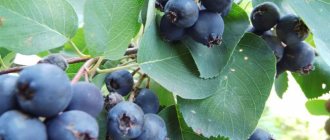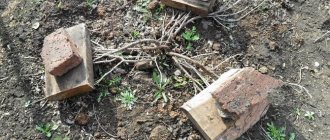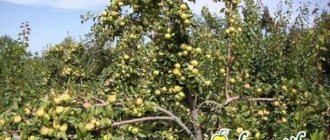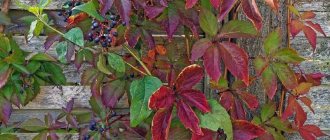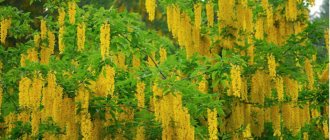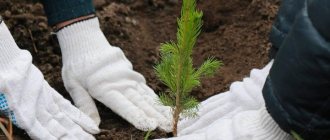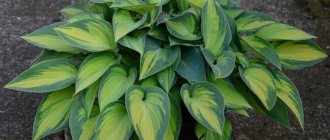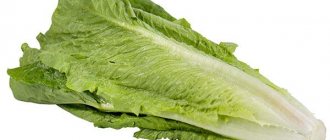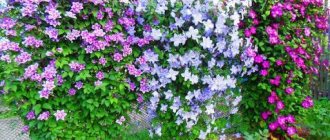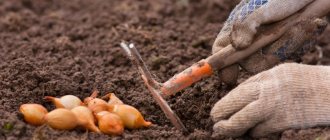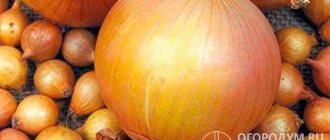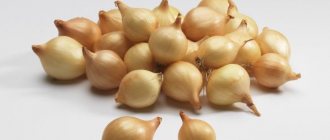Distinctive characteristics of the species
Canadian serviceberry or canadensis (canadensis) is a tall shrub with 3-20 trunks, depending on the variety. The plant develops quickly. Mature bushes grow up to 6 m and live up to 50 years. If the trunk dies, a new one is formed. Most of the roots lie at a depth of 50 cm, some go deep to 1.5 m, the branches drop below 3 m. The diameter of the bush reaches 2.5-5 m. Shoots actively rise from the roots.
Warning! On poor soils the bush has a lot of growth to find food. Light fertile soils contribute to less shoot formation.
The spreading crown of fruit varieties with drooping branches resembles an umbrella. The trunks are picturesquely curved, with smooth bark of a warm brown hue. Young shoots are bright, reddish. Ovate, finely serrated leaves 5-6 cm long on short, 1.5 cm, petioles. The leaves are pubescent, with a silvery tint, and burgundy in autumn.
Flowers with white narrow petals, up to 2-2.5 cm in diameter, collected in brushes of 3-10 pieces, attract bees, are not afraid of frost -7 oC. They bloom from the end of April and bloom for 2 weeks.
The term “decorative” is often used to describe the Canadian serviceberry. The plant is truly beautiful not only when it blooms. In early spring, the bush seems to be shrouded in a light fog when the buds open; the autumn crimson and twisting graphics of trunks and branches against the background of snow are picturesque.
A three-year-old shadberry bush begins to bear fruit. The plant enters active fruiting from 10 years to 30-40 years of age. 6-18 kg of berries are harvested from one bush, depending on the variety. Round, apple-shaped berries with a pleasant taste, weighing 1 g, 14-18 mm wide, ripen unevenly, from mid-July to the end of August. In summer, multi-colored berries with a bluish bloom hang on the plant: ripe dark purple, ripening blue and unripe pink. The berries contain 12% sugar, 1% fruit acids, 40% ascorbic acid, carotene, tannins and other active substances.
Sweet, slightly tart berries are rich in vitamins, have an anti-inflammatory effect, and affect metabolic processes.
Advantages of irgi:
- Large fruit;
- Self-pollinating;
- Annual stable yield;
- Undemanding to soil;
- Survives urban smoky conditions and effectively absorbs noise;
- Drought and frost resistance: tolerates -40 °C;
- Fast growth, 40 cm per year.
Among the disadvantages are:
- Extended fruiting;
- Difficulties with uprooting: the shoots take a long time to break through.
Comment! Irga is a light-loving plant. Plants should not be placed densely, otherwise the trunks will stretch out and bear fruit poorly.
They like to use Canadian shadberry in landscape design. Due to active growth, the bushes are planted as a hedge every 0.7-2 m. You should not expect a harvest with this planting scheme, but a fence with lush greenery will quickly form. Irga Canadian is excellent as a soloist and acts as a textural element in landscape compositions of a group of different plants.
Landing
The soil should be loose, preferably neutral. Do not oversaturate the soil; shadberry prefers ordinary garden soil in combination with humus. Groundwater must be located at a distance of at least 2 m from the root system.
Important!
If you plan to grow a shrub from Irga, the root collar is buried 1.5-2 cm. If Irga is to grow into a tree, the root collar is left above the surface of the ground.
Step-by-step instruction:
1. A recess is dug 50 cm deep and 55-60 cm wide.
2. The soil is prepared from a mixture of garden soil, 2 buckets of humus and 500 g of superphosphate.
3. Drainage is laid out at the bottom. Sprinkle with a small amount of soil.
4. The seedling is installed, the roots are straightened and sprinkled with earth.
5. The soil is compacted along the tree trunk so that the plant stays well in the ground.
6. The young seedling is watered generously with 15 liters of settled water.
7. Humus mulch is laid out around the tree trunk circle. It will prevent the formation of weeds and retain moisture in the ground.
Which varieties belong to the Canadian serviceberry species?
Saskatoon - trees and shrubs from the Apple subfamily, found in the wild nature of Europe and Asia. Plants were cultivated for gardening art, like the tall, up to 8-11 m Lamarck irgu. Particular success has been achieved by breeders from Canada, who have developed large-fruited varieties with tasty berries based on bushes growing in North America.
Pembina
The productive shrub grows in width and height up to 5 m, and forms few shoots. Oval berries up to 1.4-1.5 cm in diameter, sweet. The variety can withstand severe frosts.
Thyssen
The earliest of the Canadian serviceberry varieties, the blue berries are harvested as early as the end of June. Due to early flowering in northern regions, the plant may be subject to return frosts. The frost resistance of the shrub, which grows up to 5 m in height and 6 m in width, is up to 28-29 °C. Large, juicy berries 17-18 mm, pleasant taste, with original refreshing sourness.
Smokey
A very common, high-yielding, latest variety, grown over large areas in Canada. The bush is low, 4.5 m, the same width, drooping branches, forms a lot of shoots. The plant is resistant to diseases, blooms by the end of May, avoiding frost. The berries are 14-15 mm, covered with dark blue skin, juicy, with tender, fleshy pulp. From one plant, up to 25 kg of sweet, non-tart berries are harvested, tasty due to the balance of sugars and acids.
Sturgeon
Low-growing shadberry is a recent success of breeders. Grows up to 2.5-3 m, bears fruit consistently. The berries are on long clusters, tasty, sweet, large.
Northline
Multi-stemmed plant with vertical trunks - 20-25 pieces, up to 6 m in circumference, rises up to 4 m. Creates a lot of shoots. This variety requires a pollinator. The ovoid berries are large, with black-blue skin, 16 mm, and ripen together.
Subtleties of agricultural technology
The best predecessors
It is best to plant shadberry after the rosehip or next to it - this is the best predecessor and companion for it. But it will also take root well after other crops. The exceptions are hazelnuts and walnuts. Planting should be done no later than three weeks before the onset of frost. Annual and biennial plants take root best. Neither after planting nor in subsequent years does the shrub need winter shelter; the only manipulation that sometimes needs to be done with the shrub is pruning to prevent excessive thickening.
Reproduction of Canadian serviceberry
There are several ways to propagate your favorite variety: green cuttings, seeds, dividing the root system, layering and shoots.
- 12-15 cm cuttings are cut from the last ten days of June to the second ten days of July from the tops of 5-6 year old branches. Root in greenhouses and plant in spring;
- Berries for seeds are selected from the most productive bushes and allowed to fully ripen. Sow immediately in the fall, covered with film. If the sowing is in spring, the seeds are stratified for 80-90 days in the basement, placed in a bag of wet sand;
- Having dug up the plant, the rhizome is divided with a sharp tool and the long branches are cut off. Remove old branches and place the divisions in new holes;
- In early spring, a groove is dug near the lower healthy 1-2-year-old branches, where the branch is laid, pinned with garden staples. Cover with soil and water. Plants develop from buds;
- In autumn or spring, young shoots are separated from the mother bush.
Advice! Shoots growing from cuttings are hilled 2-3 times per season to form strong roots.
Photo of irga on the site
https://psi-na.ru/publ/sovety_dlja_vladelcev_sobak/4
Share link:
- Click to share on Twitter (Opens in new window)
- Click here to share content on Facebook. (Opens in a new window)
- Click to share posts on Tumblr (Opens in new window)
- Click to share on Pinterest (Opens in new window)
Liked this:
Like
Planting and caring for Canadian irga
Planting the non-capricious Canadian serviceberry is a standard procedure. The planting period is any, depending on the climate of the region. In the south and in the middle zone they are planted in the fall, until November. In areas with early frosts, it will be best to plant Canadian shadberry in the spring.
Site selection and preparation
Irga fruit varieties grow on all types of soil, in shady places, it does not mind cold winds, but wetlands must be avoided. The bushes can be planted from the north of the site both as a fruit crop and as a hedge. If shadberry is grown for collecting berries, the holes are placed at a distance of 4-5 m. For pollinators, sea buckthorn, rose hips, and other varieties of shadberry are selected. Although the majority of varieties have maximum self-fertility, the yield will increase.
Attention! In crowded plantings, the trunks of light-loving shadberry of any variety grow upward and bear fruit poorly.
How to choose seedlings
When buying a seedling of serviceberry not in a container, make sure that the roots are fibrous, fresh, no shorter than 20 cm. The stem is without scratches, growths, with smooth bark and swollen buds, at least 80-100 cm high. The best ones are 1-2 years old seedlings.
Planting procedure for Canadian serviceberry
The hole is dug in advance. Drainage is placed at the bottom. The depth of the hole for the bush is 0.5 m, the width is 0.6-0.65 m. The substrate is prepared on the basis of soil, adding humus, peat and sand. They also add 400 g of superphosphate, 150 g of potassium sulfate and 100 g of lime.
- The root collar is not deepened;
- The seedling is tilted at an angle of 45 degrees;
- Having covered it with soil, water it, as in the photo of a Canadian shadberry seedling, and mulch the tree trunk circle;
- The shoots are shortened by a third, to 15-20 cm, or 5 buds.
How to transplant an adult shrub of serviceberry to a new place
When moving the shadberry, the roots are carefully dug up and lightly trimmed with a sharp tool. Old branches and trunks are removed. A bush older than 6 years takes root deeper than 1 m and far in width. It is better to keep a lump of earth near the roots, no smaller than 100 x 100 cm in size and up to 70 cm in height. The hole should be larger and deeper in volume. The transplanted shadberry is watered and mulched.
Growing serviceberry in the regions of Russia
The Canadian irga is such an unpretentious plant with a high natural potential for survival in unfavorable conditions that most of its varieties are successfully cultivated in Ukraine and Belarus; they are suitable for the Baltic states, the Moscow region and other regions with cold climates.
In the middle lane
The main problem of growing fruit and berry crops in this region is not so much the frosty winter as the unstable spring weather. Prolonged thaws and returning frosts often lead to freezing of flower buds, and gardeners are left without a harvest. This is not a threat to Irga, since most of its varieties are resistant to spring temperatures dropping to -7⁰ C, which is the norm for the middle zone.
To guarantee a good harvest, we recommend growing such varieties of foreign selection as Slate, Pembina, Smoky, Northline, Thyssen.
In outskirts of Moscow
With proper planting and minimal care in the Moscow region, the Canadian serviceberry will delight you with gorgeous flowering and an abundant harvest of sweet fruits. The weather here allows the berries to gain the right amount of sugar and acquire a pleasant, specific taste and aroma. The following varieties received rave reviews from amateur gardeners:
- Pembina;
- Smokey;
- short up to 1.5 m Northline;
- high-yielding Sturgeon;
- time-tested Thyssen;
- rare Mandan et al.
Caring for Canadian irga
Planting and caring for the Canadian irga is simple. With good care, undemanding fruit varieties reach their full potential.
Watering
The developed roots of the serviceberry absorb the necessary moisture if it rains regularly. Irgu of all varieties are watered only during prolonged drought: 2 waterings per month, 20-30 liters each, through a shallow diffuser are sufficient. Young bushes are given the same norms.
Weeding and loosening the soil
The soil in the tree trunk circle is loosened after watering, removing weeds. Shallow weeding promotes greater breathability of the soil and better vital activity of the roots.
Feeding the Canadian serviceberry during the season
By fertilizing the plant, it improves its development, productivity and quality of berries. Feeding begins 2-3 years after planting.
- In early spring, up to 50 g of any nitrogen fertilizer is added to the tree trunk circle during loosening;
- 2 weeks after flowering, foliar feeding of the serviceberry bush is carried out by dissolving 1-2 g of boric acid, zinc sulfate and copper sulfate in 10 liters of water;
- During the summer season, the bush is fed monthly with organic matter: infusions of mullein, bird droppings or mown grass. Solutions are applied into 2-3 annular grooves along the projection of the crown;
- Potassium fertilizers (25-50 g) and 100 g of superphosphate are fed to the shadberry in the fall. Potassium preparations can be replaced with 0.5 liters of wood ash;
- According to reviews from gardeners about the Canadian serviceberry, it is more convenient to feed the plant with complex fertilizers.
Important! After fertilizing, the tree trunk circle is watered abundantly.
Pruning: terms and rules
Pruning increases the yield of the serviceberry bush. The plant consists of 10-15 shoots, which are periodically renewed, replacing them with shoots. The signal to remove the old shoot is the small growth per year - only 10 cm. The fruit shadberry is cut off before the sap flows.
- Sanitary pruning: removal of damaged branches and shoots that thicken the crown is carried out in early spring;
- When cutting off young shoots, leave 1-2 to replace old ones that are more than 10-12 years old;
- Vertical shoots on young bushes are pruned to a quarter of last year's growth;
- To stimulate the growth of the bush, young side branches are shortened to the sides;
When rejuvenating pruning of fruit varieties, shoots with weak growth per ring are removed, and the rest are shortened to 2.5 m;
Advice! Places of large cuts are covered with garden varnish.
Preparing Canadian shadberry for winter
In the fall, the shadberry is prepared for a period of rest. After leaf fall, the branches are inspected and dry and broken branches are cut off. All foliage is removed and the area is dug up shallowly. Frost-resistant plants are not covered. Snow is thrown onto the young seedlings and removed in the spring.
Nuances of planting and caring for Canadian shadberry in the Moscow region
In the Moscow region, serviceberry bushes of all varieties are planted in the spring. The plant does not need shelter. Only in frosty conditions without snow, the seedling is covered with agrofibre over the hay. An adult shrub of serviceberry is not covered. The tree trunk circle of the fruit variety plant is mulched with humus and covered with snow.
Blank
Serviceberry berries ripen quite early - in mid-June. As a rule, other crops are not yet bearing fruit at this time. So enjoy it to the fullest. Moreover, over the summer the berries can ripen more than once. For example, in August you can harvest another crop if the birds do not “harvest” it before you - they really love this “wine” berry.
It is necessary to collect shadberry in clusters, because more juice is released and lost from single berries. Next, they should be frozen or dried. By the way, when dried, the berries look like raisins. Correctly and completely dried berries can be identified by their shine and pleasant aroma. They must be separated from the stalks and placed in a bag or wooden container for storage.
You can prepare many culinary dishes from the berries. For example, cook compote together with other berries, make jam, jam or marshmallow. Be sure to prepare fruit juice. To prepare, you need a liter of water, half a glass of sugar and a glass of berries. And also, serviceberry makes excellent wine.
In addition to the berries, you can also harvest the bark, leaves and flowers of this plant. As a rule, irga blooms in late April - May. Flowers can be white, beige or pinkish. The easiest way to cut them is with scissors in sunny weather. At the same time, the leaves are also collected. Next, the raw materials need to be dried or a healing tincture can be prepared from the flowers. You will need 0.5 liters of vodka and 2/3 of a half-liter jar of flowers. You need to insist for 2 weeks in a dark place. Then it is advisable to pour the tincture into dark bottles and store it in the refrigerator. This remedy should be taken with high blood pressure 3 times a day, 1 tbsp.
Serviceberry bark is usually collected in the fall (October) and should be dried in a cool, dry place. A decoction of the bark can be used to gargle or lubricate wounds. To prepare you need 1 tsp. pour a glass of hot water and boil for 25 minutes.
What diseases and pests can threaten the crop?
| Diseases | Symptoms | Control measures | Prevention |
| Tuberculariosis | The shoots and foliage are purple and wither. There are red growths | Affected shoots are removed and burned. Irga is treated with 1% Bordeaux mixture or copper sulfate 2 times every 10 days | Cleaning up fallen leaves and damaged branches |
| Gray rot | The base of the shoots and petioles, the berries become covered with dark wet spots, then with a gray coating | Irgu and the trunk circle of the plant are sprinkled with wood ash or colloidal sulfur | Reduce the volume and frequency of watering |
| Leaf spot | There are spots of different colors on the leaves depending on the type of fungus involved. | Treatment with fungicides Horus, Skor, Topaz 2-3 times every week | Spraying with copper sulfate or Bordeaux mixture before buds open |
| Moniliosis | Young branches dry out after flowering | Diseased parts of the serviceberry bush are removed and burned | In early spring, the bush is treated with copper-containing preparations |
| Pests | Signs | Control measures | Prevention |
| leaf roller | Leaves are curled, with caterpillars | Treatment with insecticides Ditox, Alatar | In the bud phase, shadberry is sprayed with: Nexion |
| Serviceberry seed eater | The beetle lays eggs in the ovary. The berries are falling | After flowering, spray: Karate, Decis | Remove fallen unripe berries |
| hawthorn | Caterpillars eat leaves | Spray on buds: Nexion | Unopened buds are treated with Arrivo, Decis |
| Apple aphid | Young leaves are curled, inside a colony of aphids. The leaves are drying | Spray the affected tops by dissolving 300 g of laundry soap in 10 liters of water | Unopened buds are sprayed with insecticides (Sumition) |
| Moth | The larvae feed on leaves and gnaw out passages | Use insecticides Confidor-Maxi, Mospilan, Kinmiks | Having collected the berries, they are treated with: Bitoxibacillin, Lepidocid |
Harmful effects on shadberry
The main enemies of the serviceberry are the seed eater and the moth:
- After an attack by a seed-eater, the shadberry may stop bearing fruit, because it eats the seeds and reproduces in the berries.
- Moth causes foliage to dry out.
The drugs “Actellin”, “Fuafon” and “Karbofoson” can help get rid of pests.
Description
The height of the serviceberry depends on the species and varies between 0.2-20 m, but the main garden forms grow on average from 2 to 5 m. Some of them are small trees, others are formed as shrubs, rarely forming low wide cushions. The bark is gray or brownish, smooth in young trees, and cracks with age.
The leaves are cauline, alternate, simple, lanceolate to elliptical, 1 to 5 cm long, thin or leathery, densely pubescent during flowering, then less hairy or smooth. Flowers appear before leaves in racemose drooping inflorescences from 4 to 20 pieces, in some species - single at the ends of the shoots. Five white (less often pinkish, cream, pale yellow), linear petals 3-25 mm long make the flowers look like stars.
Irga canadensis
The fruit is a red, dark purple to almost black berry when ripe, with a diameter of 5-15 mm. They ripen in June (hence the English name for serviceberry - Juneberry) and resemble blueberries in size, color and taste. Garden berries are edible raw and are also often used to make jams, preserves, jellies and pie fillings.
